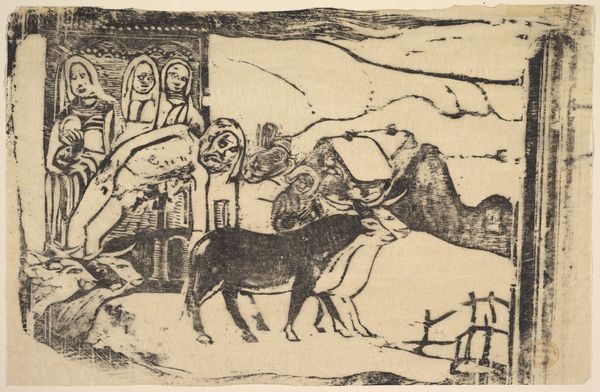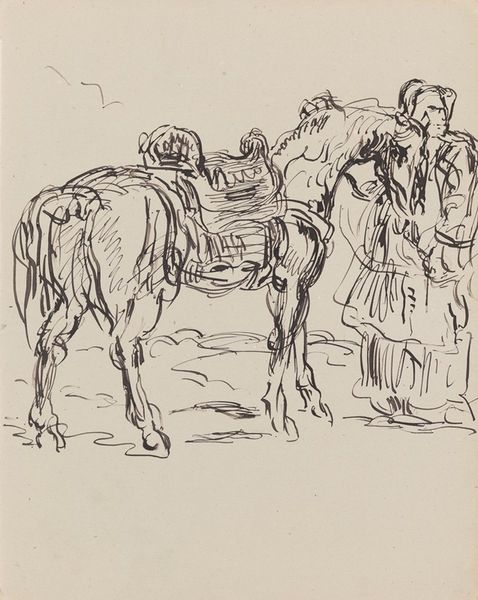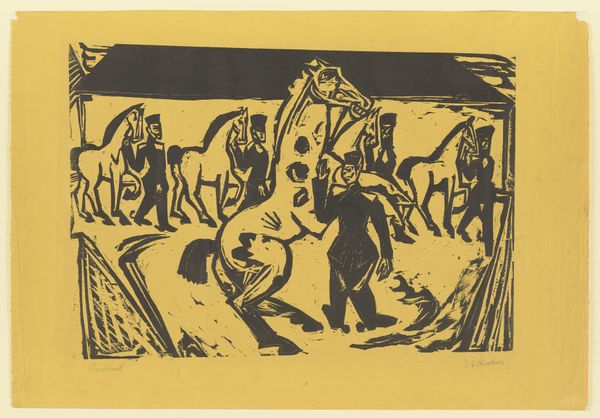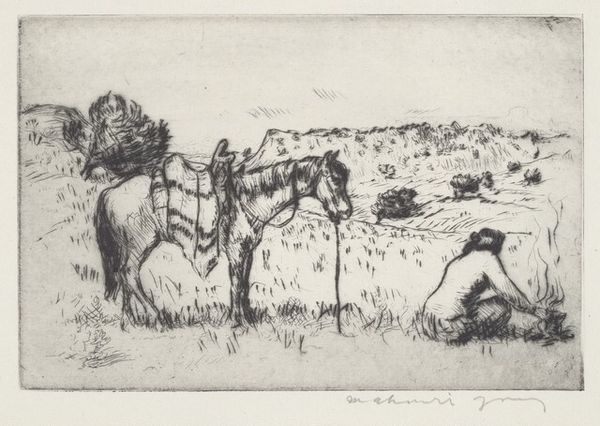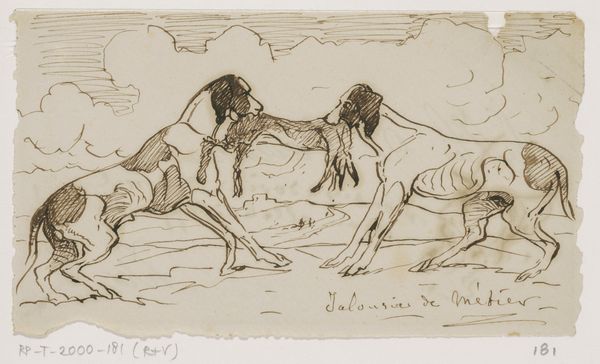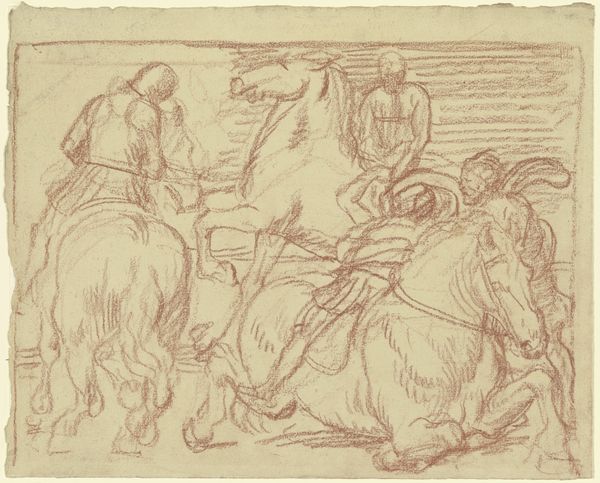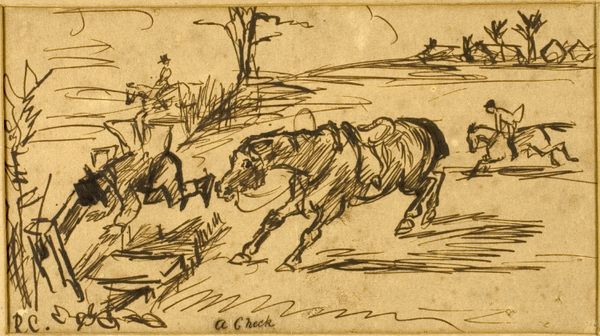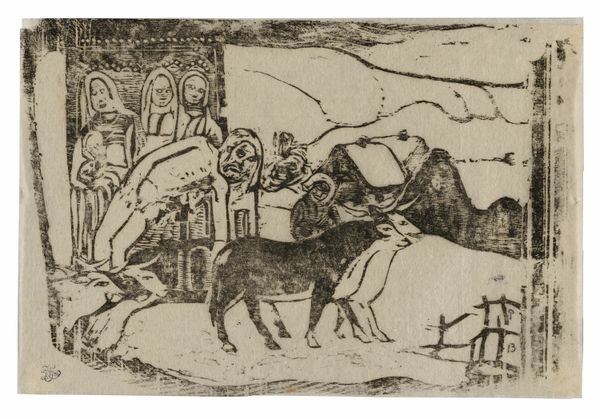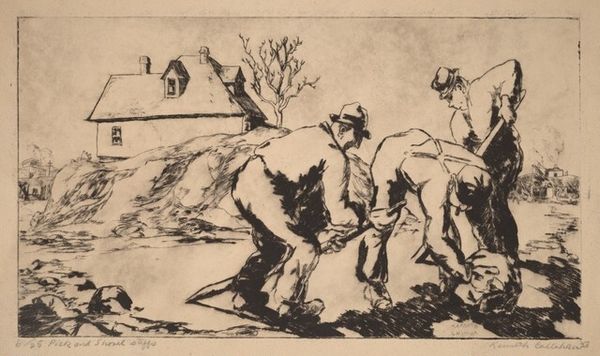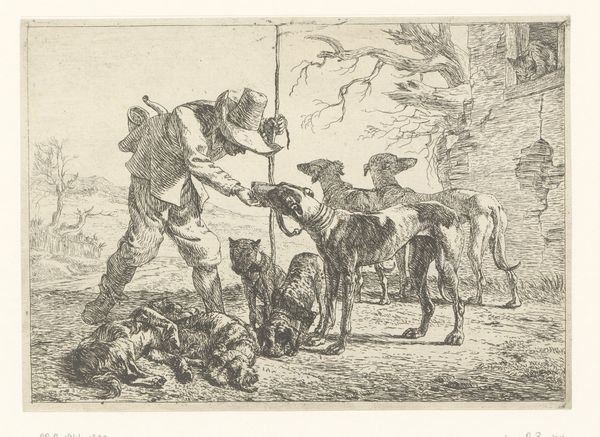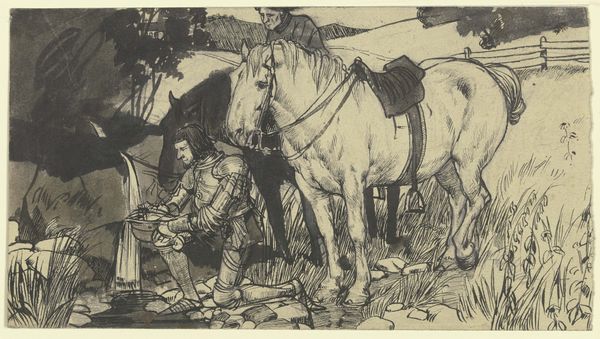
drawing, ink
#
portrait
#
drawing
#
narrative-art
#
pen drawing
#
landscape
#
figuration
#
ink
#
sketch
#
post-impressionism
Copyright: Public domain
Editor: So, this is Paul Gauguin’s "Change of Residence," created in 1902 using pen and ink. It feels like a snapshot of a story. There's a figure on horseback, others standing around... How do you interpret this work, especially considering its title? Curator: Well, the title suggests movement, displacement. But given Gauguin’s history, we can look beyond a simple relocation. This work was made late in his career, after his extended stays in Tahiti and the Marquesas Islands. Consider his artistic project—attempting to escape what he viewed as the corruption of European civilization. What if the “change of residence” is less about geography and more about cultural or spiritual transition? Editor: That's interesting! So it's not just about physically moving, but also a symbolic shift? What supports that reading? Curator: Absolutely. Look at the figures – their depiction borrows heavily from non-European artistic traditions. Gauguin was fascinated, and arguably exploited, the imagery and cultures of the Pacific Islands, imbuing them with his own romanticized ideas. But did he truly "change residence," or simply project his desires onto another culture? Did his art facilitate cultural understanding, or perpetuate harmful stereotypes? Editor: I see what you mean. It brings up a lot of complex issues around cultural appropriation. I guess you can't really separate the art from the social context. Curator: Exactly. Museums like MoMA now grapple with how to display such works, acknowledging both their aesthetic significance and their problematic history. It’s about fostering critical engagement. How do we display art in ways that provoke important discussions about its impact on social understanding, and the ethics of artistic production? Editor: It definitely makes me think differently about how art is connected to larger social and political landscapes, something that might otherwise go unnoticed. Curator: Indeed. By exploring this, and questioning it, you take active role in shaping the narrative around the artwork, enriching the overall discussion of it.
Comments
No comments
Be the first to comment and join the conversation on the ultimate creative platform.

